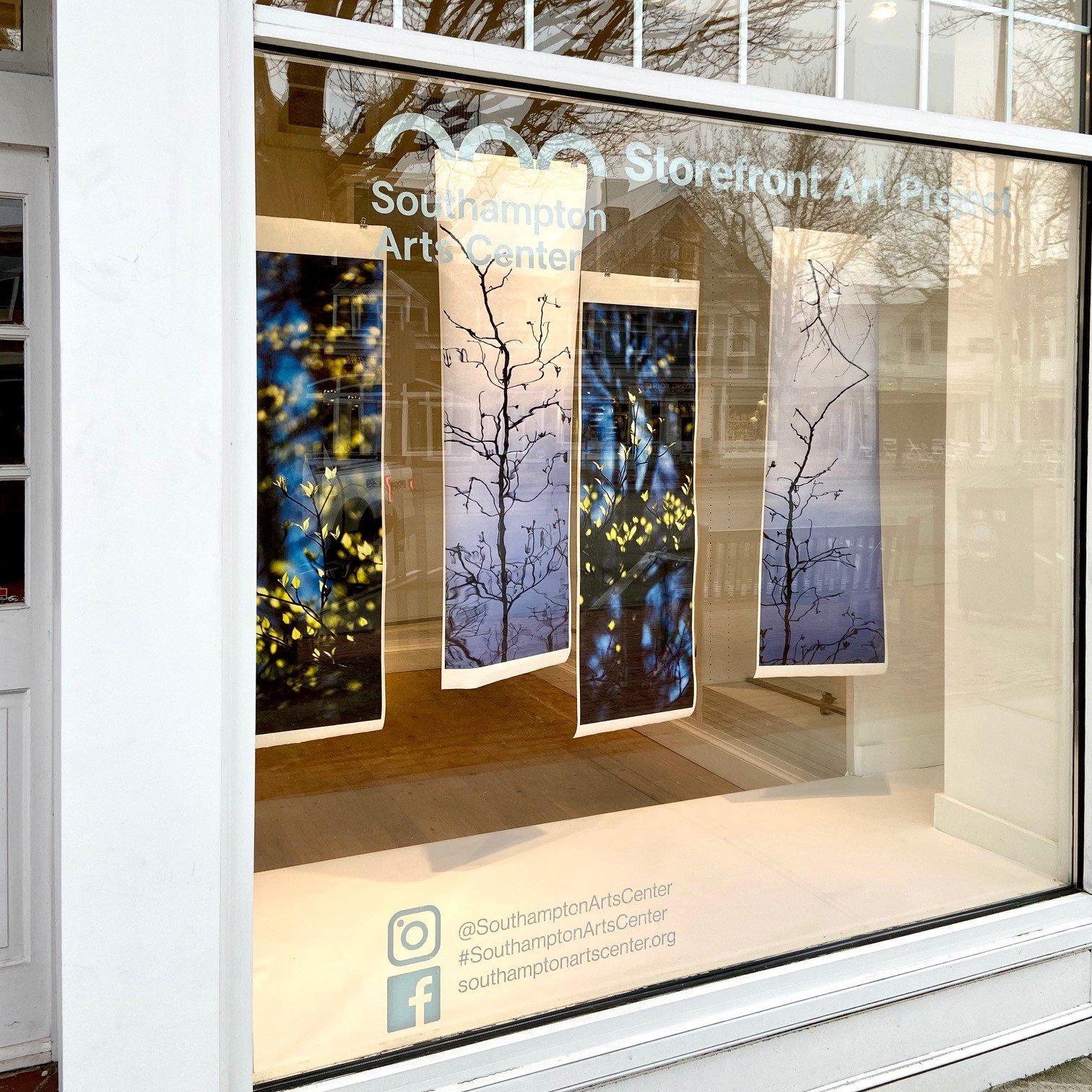
It’s not uncommon for storefronts to remain empty during the colder months in Southampton, the quiet eastern Long Island village overrun by beach-bound New Yorkers every summer. But the pandemic has exacerbated the issue, leaving its commercial streets looking like ghost-town versions of their former selves.
Now, the village is turning to local artists to breathe a little life into these tenantless properties.
Last year, Southampton mayor Jesse Warren introduced the Storefront Art Project, an initiative requiring landlords to fill storefront spaces that have been empty for more than a month with creations from community artists, or else be slapped with a $1,000 to $2,500 fine. The idea was signed into village code in July, and its impact is starting to be felt on the streets now.
An installation by Alice Hope. Courtesy of the Southampton Art Center. Photo: Jenny Gorman.
Artworks can’t be offensive or overtly political, according to the law, and must be approved by the village administrator or come via sponsorship from the Southampton Arts Center or Southampton Artists Association. (The town encourages artists to go through these organizations for support—financial and logistical—in realizing potential projects.)
A grace period for landlords extends through next month, after which fines will be doled out to nonparticipants. But Mayor Warren doesn’t anticipate many of those.
“Our goal is to partner with the landlords, not to fine them. We want them to succeed so we’ve been pretty lenient with the enforcement,” he tells Artnet News over the phone. “We’ve received mostly positive comments. If anything, people are calling us up and saying, ‘Enforce the law more!’”
Among the first fruits of the initiative was a pair of wavelike assemblages made from coat hangers, price tags, and aluminum can tabs by local artist Alice Hope, which went up in the window of what used to be a Chico’s clothing retailer last November. Following that came an installation of photographs by Kerry Sharkey Miller hung in a former J. Crew earlier this month.
“The community has been very enthusiastic about the project,” says Amy Kirwin, artistic director of the Southampton Art Center, which sponsored both artworks. “The installations are providing a safe way for people to enjoy art during these challenging times, and it also benefits local businesses by driving more traffic into the village.”
Artist Monica Banks. Courtesy of the Southampton Art Center.
“Of course the ideal situation would be for all of the shops to be rented, but this is a wonderful alternative in the colder months,” she adds.
Kirwin says three other installations are in the works, one of which—a suite of ceramics resembling baked goods by artist Monica Banks—will be revealed in the coming weeks. Meanwhile, there’s a stack of additional proposals still to sort through as more windows become available.
The artists behind these projects were paid, via honorarium, by the Art Center, but the law doesn’t require landlords to pay installation artists. For most participants, the appeal will come in the form of free exposure—and from that, hopefully, sales.
On this point, Mayor Warren says he encourages landlords to take a note from some of the village’s newest inhabitants—art businesses like Hauser & Wirth, Phillips, and others that have recently opened up Long Island outposts—and market their artists’ work, the way a gallery might. They can even take a cut of potential sales, he says.
As of last week, some 75 storefronts on Southampton’s two biggest commercial stretches, Jobs Lane and Main Street, remained empty, according to the Washington Post.